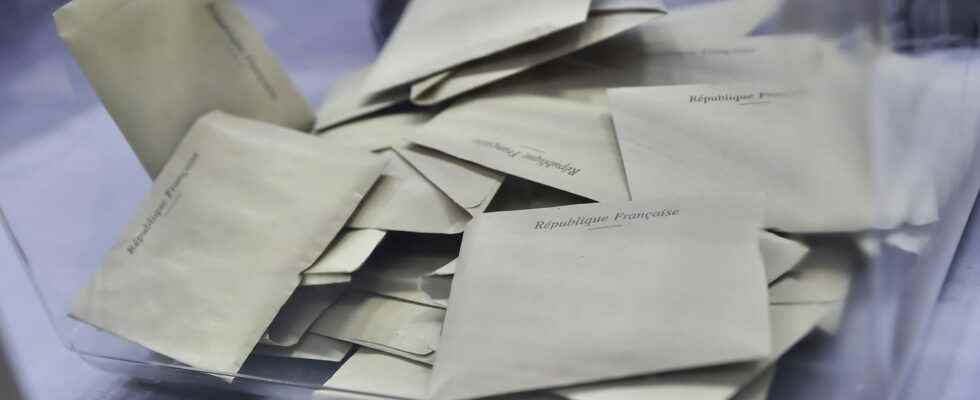“Favorable balloting”, “triangular” … It is not always easy to understand these terms of the political lexicon. These being likely to be used this Sunday, June 12 following the verdict of the first round of the legislative elections, here are their definitions.
[Mis à jour le 22 juin 2022 à 16h42] “Favorable balloting”, “triangular”… Knowing these terms could be very useful for you to follow the result of the first round of the 2022 legislative elections, this Sunday evening, June 12. During an election presidential, things are simple. Only the two leading candidates have the right to be present in the second round. But for legislative elections, such as municipal or departmental elections, the voting system is different. For these 2022 legislative elections, a two-round binominal ballot applies. All the pairs who have gathered in the 1st round more than 12.5% of the votes of registered voters have the possibility of remaining in the 2nd round.
This rule implies, beyond the two candidates who came out on top at the end of the first round of legislative elections, a third who would have achieved this feat (12.5% of registered voters in a context of high abstention is a challenge) could therefore also qualify for the second round. This is when we talk about triangular (three pairs of opposing candidates).
What is “favorable bundling”?
In a two-round majority ballot like that of the legislative elections in France, which is practiced at the level of the electoral constituencies, the favorable ballot designates a very specific situation for a candidate. One thus speaks of “favorable tossing” when a candidate came out on top in the first round, without having received the number of votes necessary for his election. The term “ballotage” quite simply means that during the first round, no candidate has fulfilled the conditions required to be elected from the first round (the absolute majority of the votes cast and a number of votes equal to a quarter of the number registered voters). The designation of the winner then takes place via the second ballot. The candidate who obtains the most votes in the second round will be elected.
What is a “triangular”?
“Triangular” is also a term that often comes up in the legislative lexicon. In the context of an election such as the legislative ones in France, this word is used when, at the end of the first round, three candidates managed to reach the threshold necessary to remain in the second round, and did not withdraw. This threshold is established, during legislative elections, when the vote of at least 12.5% of registered voters. On the other hand, a triangular is not possible, for example, during the presidential elections in France, where only two candidates can, whatever happens, remain in the second round.
In the event of a triangular legislative election, in other words, when we find ourselves with three candidates running in the second round of a two-round election, this favors alliance strategies at the national level. In a logic known as “republican discipline”, the candidates having reached the threshold of maintenance for the second round but being the least well placed in their political family, will most of the time abandon the race to ensure a victory for their camp. The “triangular” voting system is therefore unfavorable to divided political branches which fail to establish withdrawal agreements. It has also happened to attend quadrangular (4 duos of candidates in contention) in some cases in the 2nd round, but for these legislative this option should be almost absent.
It should be noted that, the threshold for maintaining the second round being calculated from the number of registered voters for the legislative elections, the triangular are all the more rare as the abstention is strong. For example, the possibility of a triangular is swept away from a participation rate of less than 30%. However, the rate of abstention in the legislative elections fell sharply during the Fifth Republic, from 18.7% in 1973 to 51.3% in 2017, according to the overall results provided by the Ministry of the Interior. You also wonder what the “quadrangular” election means? This ballot simply designates an election in which four candidates are present. If this case is extremely rare, it nevertheless occurred in the legislative elections of 1958, 1962, 1967 and 1973.
